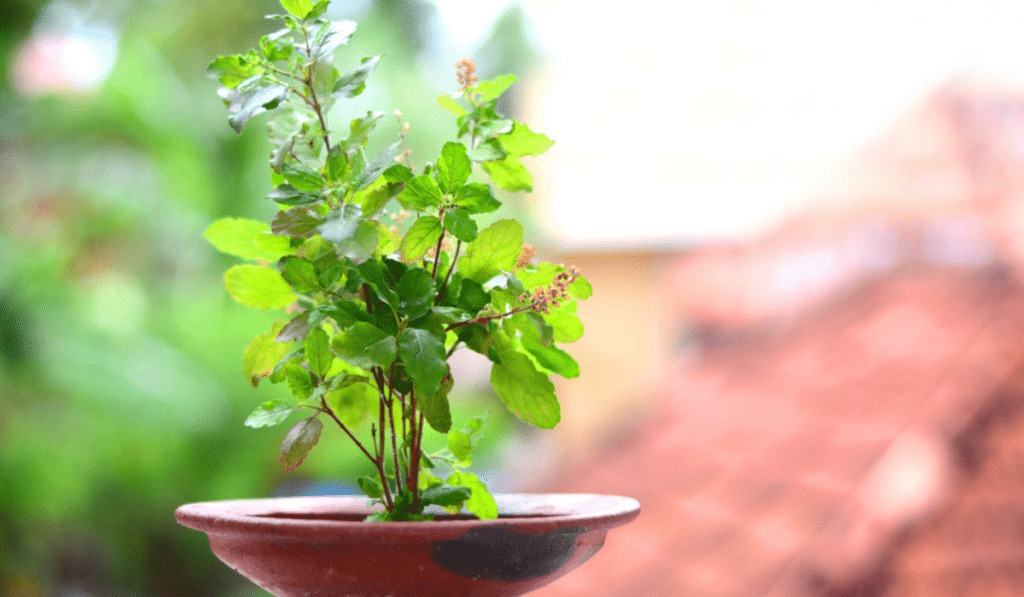In the bustling world we inhabit today, where technology and modernity often take center stage, there exists a profound reverence for tradition and spirituality that transcends time and space. One such tradition that continues to grace homes across India and beyond is the worship of Tulsi (Ocimum sanctum). The Tulsi plant, known as the “Holy Basil,” is not just a botanical entity; it is a revered symbol of devotion, purity, and an integral part of countless households’ spiritual practices.
The Significance of Tulsi Worship
Tulsi holds a revered place in Hinduism and other spiritual traditions. It is not just another plant; it is a symbol of the divine presence, and its worship is deeply ingrained in the Indian culture. Here’s why Tulsi worship at home is considered significant:
- A Messenger of Wellness: Tulsi is celebrated for its medicinal properties. It is considered a natural remedy for a variety of ailments, including coughs, colds, and digestive issues. Its leaves contain essential oils and phytochemicals that promote well-being.
- A Guardian of Purity: In Hindu mythology, Tulsi is believed to be an incarnation of Goddess Lakshmi, the consort of Lord Vishnu. By nurturing and worshiping Tulsi, devotees invite purity, prosperity, and divine blessings into their homes.
- A Beacon of Spirituality: Tulsi is often referred to as the “Queen of Herbs” and is considered sacred in Ayurveda. Its presence in the home is believed to enhance spiritual vibrations and create a serene atmosphere for meditation and prayer.
- A Symbol of Devotion: Devotees believe that worshiping Tulsi is a gesture of devotion to the divine. The act of caring for the plant, offering it water, and lighting a lamp near it is a daily ritual that connects individuals to their spiritual roots.
Tulsi Worship Rituals
The daily worship of Tulsi is a ritual filled with symbolism and devotion. Here’s a glimpse into the customary practices associated with Tulsi worship at home:
- Planting and Care: The process typically begins with planting a Tulsi sapling in a specially designated area within the home or garden. It is watered daily, and care is taken to ensure its well-being.
- Prayers and Mantras: Devotees perform morning and evening prayers in front of the Tulsi plant. The act of lighting a lamp and offering flowers and incense is accompanied by the chanting of sacred mantras.
- Watering Ritual: Watering the Tulsi plant is a daily act of devotion. It symbolizes nourishing the divine presence within the plant and inviting its blessings into the home.
- Lighting the Lamp: A lamp is often lit near the Tulsi plant, signifying the dispelling of darkness and the illumination of spiritual knowledge.
- Offerings: Devotees may offer fruits, sweets, or other items to the Tulsi plant as a symbol of gratitude and devotion.
The Harmony of Science and Spirituality
Tulsi worship is not just a matter of tradition; it’s a beautiful convergence of spirituality and science. Modern research has validated many of the medicinal properties attributed to Tulsi. It is rich in antioxidants and possesses antimicrobial, anti-inflammatory, and adaptogenic properties. While spirituality and science may seem like distinct realms, Tulsi bridges the gap, reminding us that nature and divinity are intricately intertwined.
Conclusion
Tulsi worship at home is not merely a religious obligation; it is a soul-nurturing practice that connects individuals to their spiritual roots and the healing power of nature. It serves as a reminder that amidst the chaos of modern life, there is a sacred space within our homes where purity, devotion, and well-being thrive. As we continue to tread the path of tradition and spirituality, let Tulsi be our guiding light—a green beacon of spiritual bliss that radiates harmony in our lives and homes.


